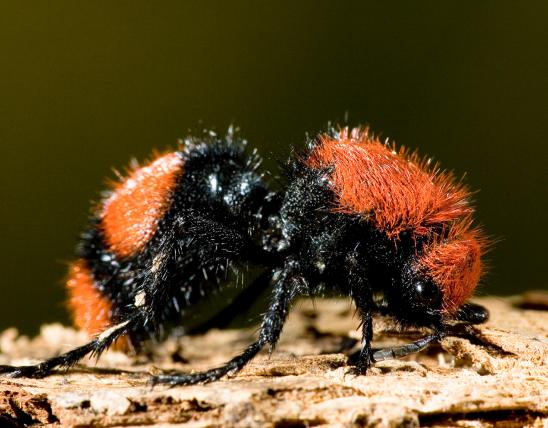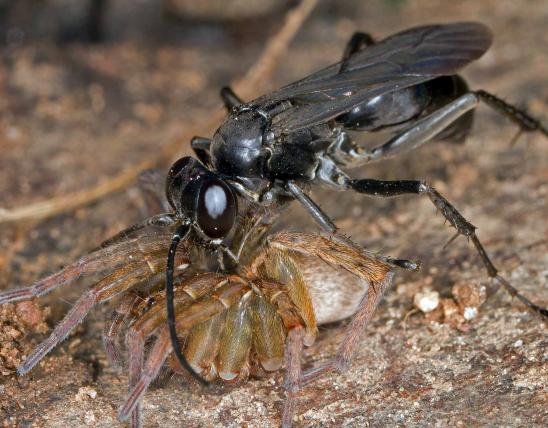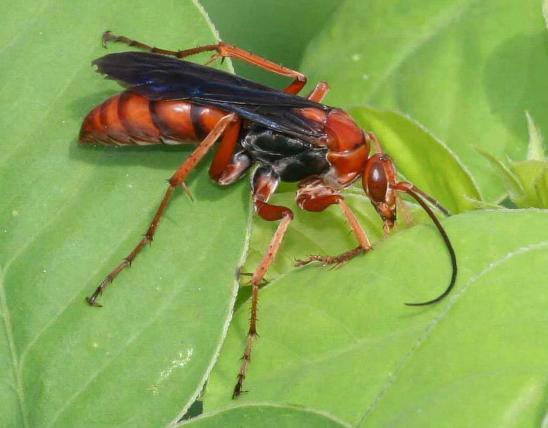
Spider wasps in genus Psorthaspis look quite a lot like velvet ants. With their wings, these spider wasps might easily be mistaken for male velvet ants (which have wings). There are about 13 species in North America north of Mexico. The ones in our region are usually velvety red and black, just like the typical coloration of the velvet ants in our area.
Learn more about this and other spider wasps on their group page.
Habitat and Conservation
Females are usually seen in wooded areas, busily hunting on the ground for spiders. Apparently, trapdoor spiders might be their favorite prey.
These wasps, like the velvet ants they mimic, are said to have a very painful sting. They are not aggressive, however, and will not sting unless they are mishandled or stepped on with bare feet.
Biologists have been intrigued by the regional correlation of color forms of this genus of spider wasps with the various species of velvet ants in genus Dasymutilla. In some regions, both the velvet ants and the spider wasps are red. In other regions, they are all yellow. In other places, they are all orange. The black stripes or other patterns also are correlated regionally. Most people know about the mimics in the animal kingdom where a harmless species develops the look of a venomous or toxic one, and gains protection. However, in the case of the spider wasps and velvet ants, the colors developed because both groups are venomous. In cases like this, it's called Müllerian mimicry.


























